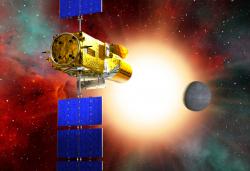

COROT stands for “Convection Rotation and planetary Transits”. The first part of the name, convection rotation, means that COROT will be able to probe the insides of stars, measuring accoustical waves that ripple across their surfaces. This is a technique that astronomers use called asteroseismology. The second part of the name, planetary transits, refers to its ability to measure how much a star dims when a planet passes in front.
It’s this second ability, planet hunting, that should prove really exciting. COROT will monitor hundreds of thousands of stars at the same time, watching to see if any periodically dim and brighten. Most of the planets COROT will turn up will probably be the “hot jupiters”; large planets circling close to their parent stars. But its instruments should be sensitive enough to find rocky planets that orbit within 50 days of their stars. It could turn up a whole new class of planets never before discovered.
How can we explore Saturn’s moon, Enceladus, to include its surface and subsurface ocean, with…
Have you ever wondered how astronomers manage to map out the Milky Way when it's…
NASA astronomers have been continuing to monitor the trajectory of asteroid 2024 YR4. The initial…
Some exoplanets have characteristics totally alien to our Solar System. Hot Jupiters are one such…
Stars form in Giant Molecular Clouds (GMCs), vast clouds of mostly hydrogen that can span…
Let’s dive into one of those cosmic curiosities that's bound to blow your mind: how…